History has become a hot topic in our home.
No, nothing is on fire…
It’s just that my 10-year-old is absolutely obsessed with history! So, we’ve been enjoying a fantastic early American history timeline and unit study.
Planning Our Early American History Unit Study
*Disclosure: This post may contain affiliate links. Please read my disclosure statement for more information. I received The Giant American History Timeline Book 1 & 2 from Sunflower Education at no cost in exchange for a review and was compensated for my time. A positive review was not required. As always, all thoughts and opinions are my own. I only choose to share resources that I would use with my own family and those that I believe other families will enjoy.
Planning our Early American history unit study was easy! I knew I wanted to use quality read alouds, hands-on activities, and a wall chart type timeline to give us a visual of more complex historical developments.
We used The Giant American History Timeline Book 1 from Sunflower Education and it was perfect for enhancing visual comprehension!
The Giant American History Timeline Books cost $29.95 each, for a hard copy, and just $14.95 for the PDF Downloadable copy!
The Giant American History Timeline Book 1
Folks, these books are jammed packed with 249 pages of American history activities great for grades 4 and Up. The book covers eight units:
- 1 Discovery and Exploration: Prehistory–1606
- 2 Colonial America: 1585–1776
- 3 The Revolutionary Period: 1765–1783
- 4 Creating the Constitution: 1781–1803
- 5 Expanding the Country: 1790–1860
- 6 An Age of Advancements: 1790–1860
- 7 Social Issues: 1790–1860
- 8 The Civil War and Reconstruction: 1850–1877
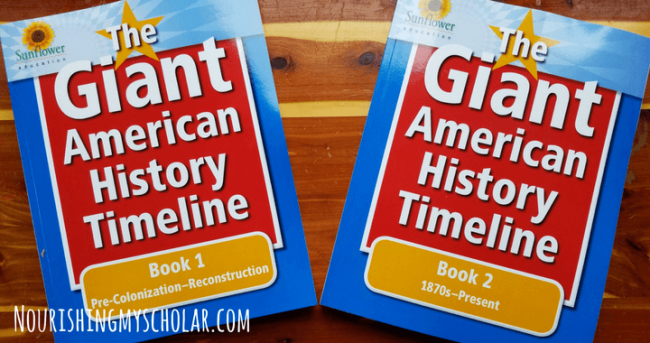
The Giant American History Timeline Book 2
The Giant American History Timeline Book 2 covers eight units:
- 1 Industrial Growth and Technological Advancement: 1870–1910
- 2 Big Business and Social Reform: 1870–1910
- 3 America and the World: 1867–1910
- 4 World War I: 1910–1920
- 5 The Roaring Twenties and the Great Depression: 1920–1940
- 6 World War II: 1930–1950
- 7 The Cold War: 1940–1990
- 8 The Civil Rights Movement, Technology, and Terrorism: 1954–Present
You can also take 20% off of the digital copy of The Giant American History Timeline Book 1 & 2 bundle with the promo code provided at the bottom of this post.

Books We’ve Used
No unit study is complete without quality read alouds and fantastic chapter books. Holy Guacamole, did we read a load of books about early American history!
- Children’s Encyclopedia of American History by
- Virginia Native Peoples by
- The Native Americans: An Illustrated History by
- The Discovery of the Americas by
- The Age of Discovery by
- Follow the Dream: The Story of Christopher Columbus by
- Encounter by
- Exploration and Conquest: The Americas After Columbus: 1500-1620 by
- Pedro’s Journal: A Voyage with Christopher Columbus by
- The Iroquois by
- The Timucua by
- Samuel De Champlain: From New France to Cape Cod by
- Eat Your U.S. History Homework: Recipes for Revolutionary Minds by
We found that our Early American History Unboxed Kits worked beautifully with our read alouds and the Giant American History Timeline! We used the Explorers Unboxed, Powhatan Unboxed, and St. Augustine Unboxed as part of our unit study.
We even played a couple of games to help reinforce our early American history study!
The First Americans
We began our study of early American History with the Native American tribes of North America. The Giant American History Timeline Book 1 gave us maps to fill in indicating their migration from Asia. My son filled in another map showing the different Native American tribes and their ranges.
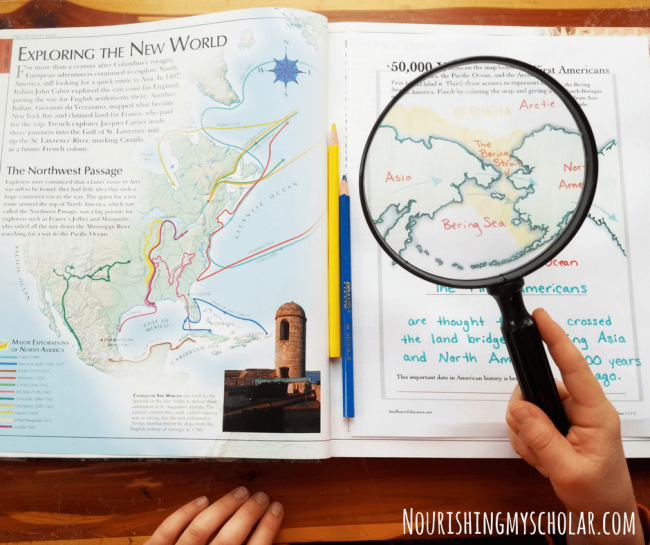
From our read alouds and Powhatan Unboxed, we learned about the legend of the Three Sisters; beans, maize, and corn and their importance to the Native Americans. The children planted the three sisters and currently have them sitting on a windowsill waiting for spring!
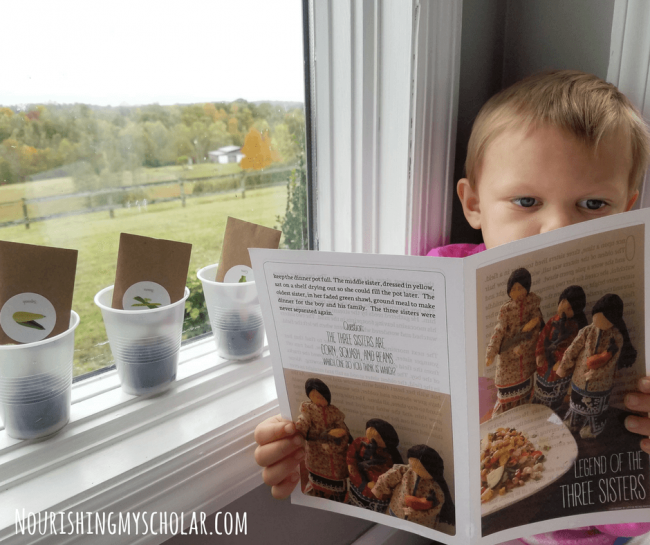
We made cornbread and even explored beadwork with this bead loom. Beads were an important tradition in most Native American cultures.
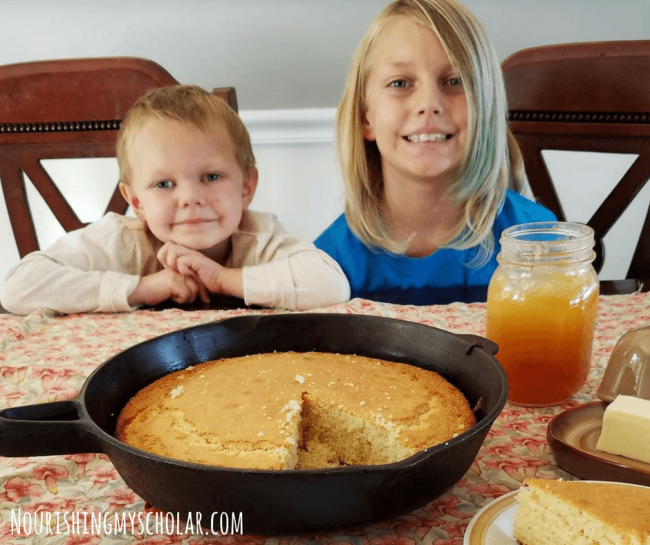
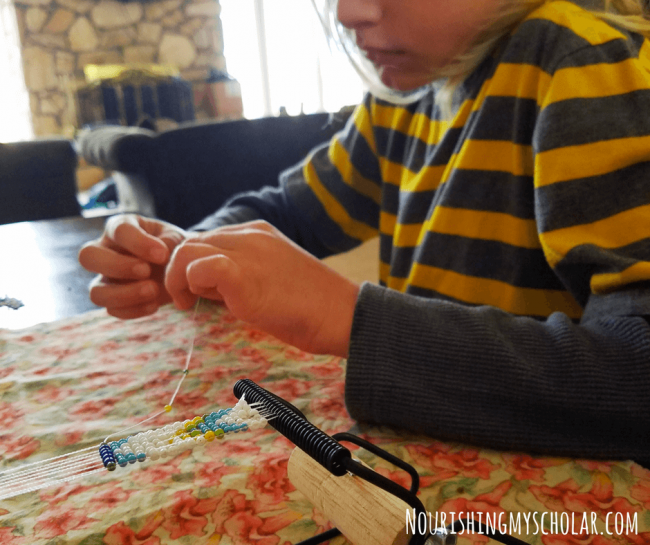
Hands-On Early American History Activities
The kids made hardtack biscuits and explored how life at sea might have been for months on end as a sailor on board one of the explorer’s ships. We played card games and practiced knot tying with our Explorers Unboxed. They also learned how to use a compass!
The children unanimously agreed that hardtack was NOT very appetizing!
My husband came to the same conclusion when he came home from work and thought we made him a tasty treat. The look on his face after the first bite was priceless! The kids informed him that hardtack was not for enjoyment…Hardtack was HISTORY and a way to survive months at sea!
Also, scurvy…
My kids think they’re getting it now anytime we run out of fruit, ha!
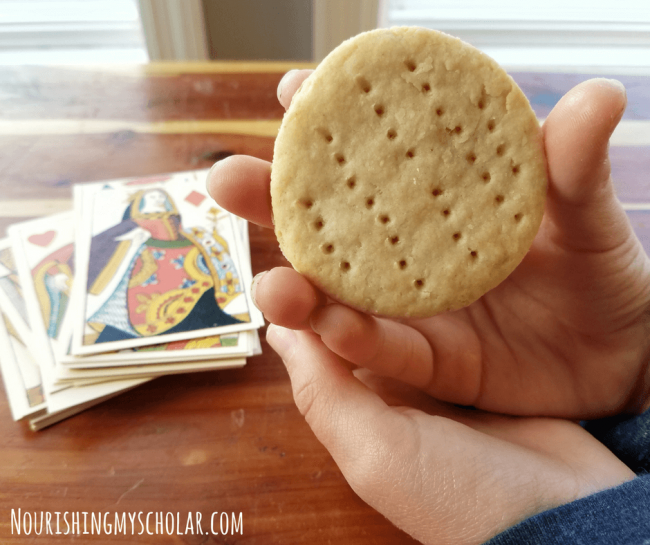
The Carrack was one of the workhorses of European ships. With The Giant American History Timeline, we learned about the different part of the explorer’s ships including sails, hull, and other structures.
The Columbian Exchange
Talk of fruit also brought about discussion of the Columbian exchange. The Giant American History Timeline Book 1 gave several pages exploring “Before European Contact” and then the Columbian Exchange itself.
This gave the children a wonderful visual on exchanges of plants, animals, ideas, people, and diseases that traversed the Atlantic Ocean.
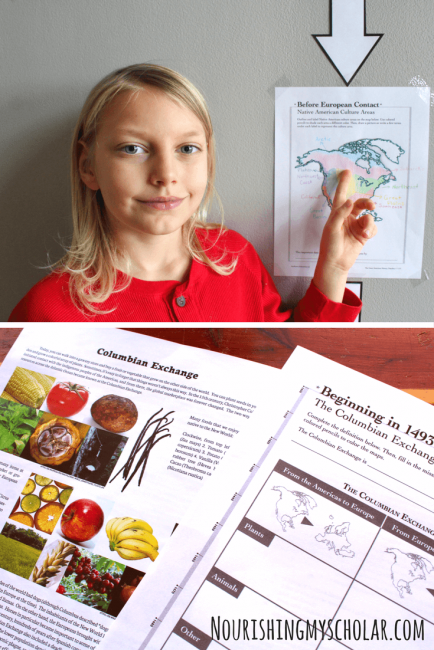
Early American History and The Search For Gold
We know that explorers were initially looking for an alternative route to Asia when they stumbled upon the Americas.
These Gold and Silver Doubloon Replica coins came in our History Unboxed St. Augustine Box. They went wonderfully with our study of Coronado and his search for the Cities of Cibola or the Seven Cities of Gold in the Southwestern parts of North America!
Many of the explorers ended up coming to the New World in search of gold and other treasures. Most did not find any.
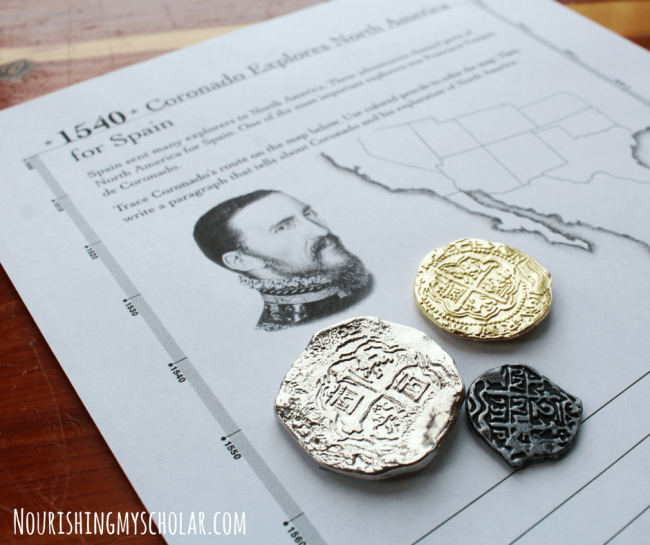
Map Activities
My son used color pencils and markers to create and fill in maps. He also filled in routes and biographies of different explorers.
The Giant American History Timeline activity sheets focused on important dates, events, persons, places, and ideas of the time.
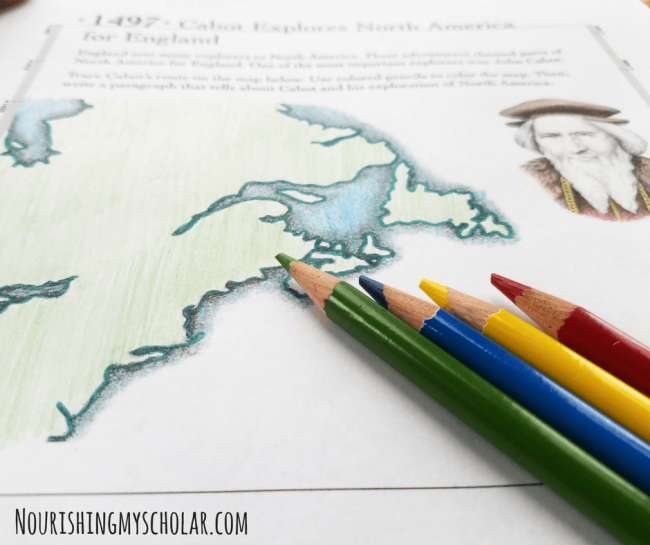
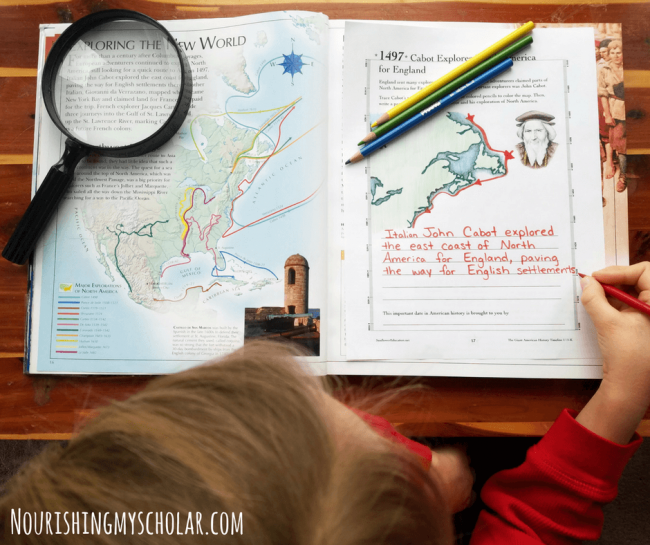
Putting Our Giant American History Timeline on The Wall
This was such fun!
Although, the air vent along this wall made for interesting acrobatics while trying to tape the pages up!
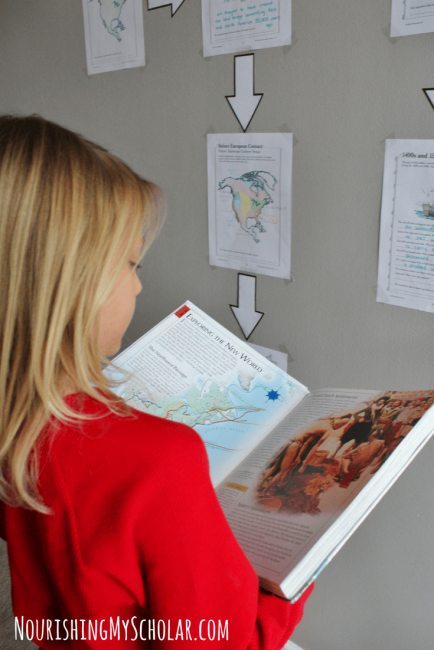
The Benefits of a Timeline
Having the timeline on the wall was awesome for several reasons:
- It helped the children make connections between events and individuals
- My son was able to see the BIG picture from the era of explorers
- Understanding of the chronological order of events was easily obtained with the use of our Timeline
- Being able to color and fill the timeline out himself, my son gained a more concrete grasp of events and cultures
- There was a sense of pride in displaying all of his hard work for everyone to see
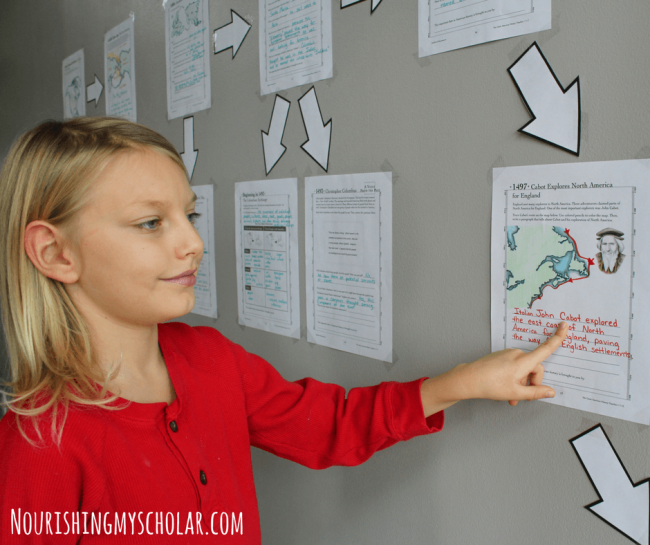
Want to See More from Sunflower Education and The Giant American History Timeline?
We have only explored the first section of The Giant American History Timeline Book 1 Discovery and Exploration. I really loved using it as a supplement to our history read alouds and hands-on activities! We plan to continue using these awesome history resources. Now we will be moving on to Colonial America.
The digital Giant American History Timeline Book was easy for me to navigate. I was able to print off only what pages I needed at a time. The answer key and parent support were super helpful for any questions I didn’t know the answers to.
Sunflower Education publishes educational materials for teachers, parents, and kids. Be sure to follow them on Facebook, Twitter, and Pinterest!
Nourishing My Scholar readers can take an additional 20% OFF The Giant American History Timeline Bundle (digital) with Promo Code:
TIMELINE20
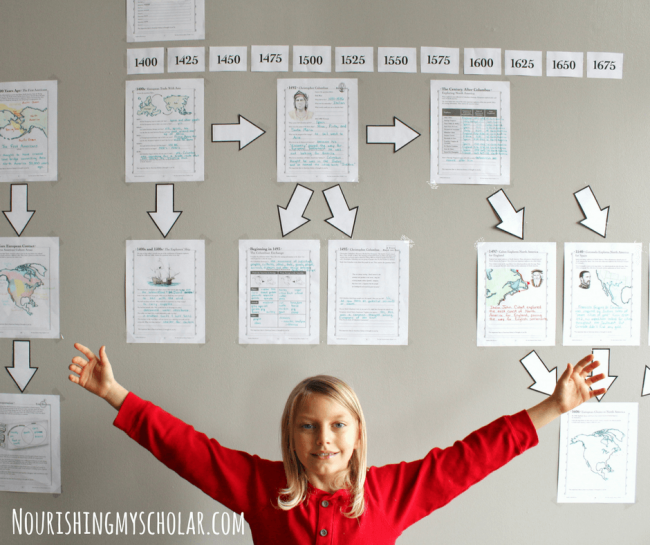

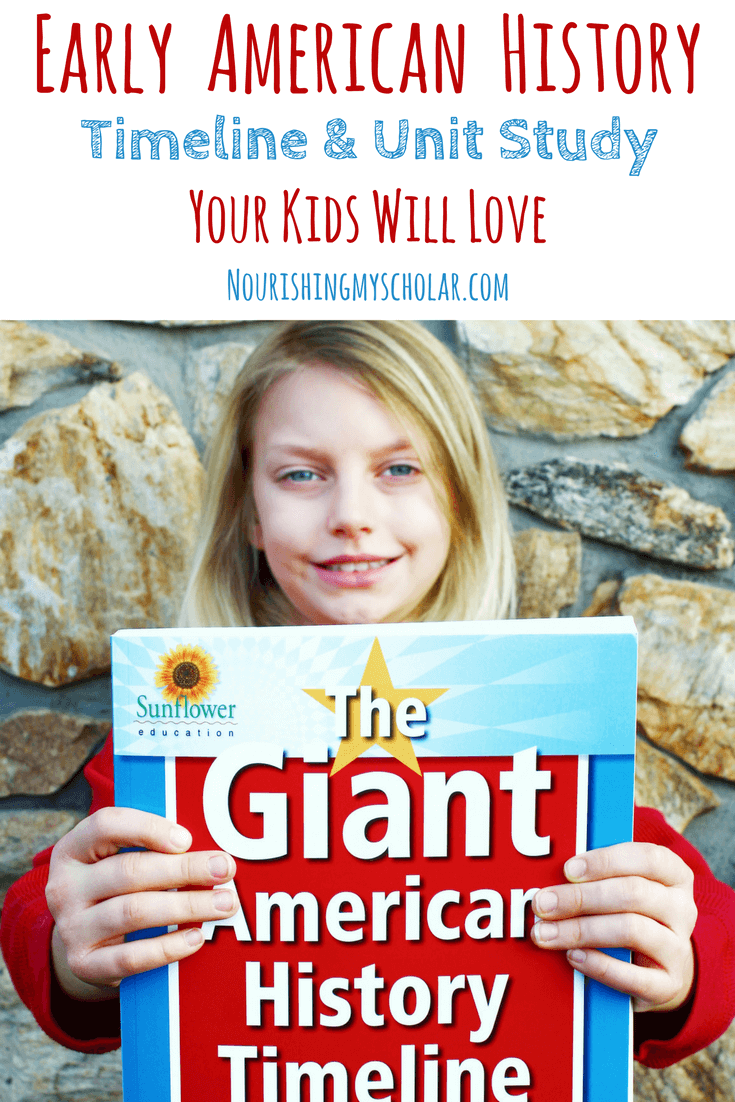

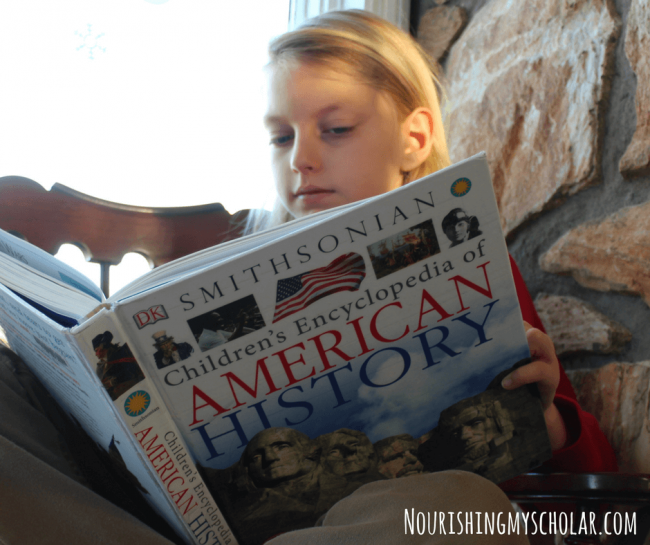
Is this an actual book or an ebook?
You can buy the actual GIANT American History timeline book on Amazon OR the ebook through Sunflower Education.
How long would you say the section took? Just bought this from your link, trying to plan how to spread it out.
Hello, it took us a couple of months to finish this unit. We did a page out of the timeline every couple of days. Although there were a few that we focused on a single sheet for that week. Then there were the read alouds and hands-on activities sprinkled in between. But we don’t usually do history every day. So, you could make the unit last longer or shorten it depending on how often you wanted to do the timeline sheets and the additional activities.
Did you use an additional history book spine, or was the timeline book sufficient as a spine, and then you just added the read alouds? Your daughter, in one of the pictures, is standing near the timeline wall, but she’s also holding a book – is that the timeline book or a different one? I have one if 5th and one in 2nd – did you find that your younger student could join in on more than the hands-on activities, or did you do separate planning altogether for him? Would you say that this curriculum is secular, or at least neutral? Thank you so much for all of your time and feedback!
Hello, Thanks for all of your questions. Let me see if I can answer them for you. I used the Timeline book in conjunction with the Children’s Encyclopedia of American History and our History Unboxed. So, I would say the timeline is a great supplement but not a stand-alone spine. I believe the picture you are referring to is of my son (red shirt and long blonde hair) standing near the timeline holding the Children’s Encyclopedia of American History. My younger student is 5 year’s old so she mainly participated in the hands-on activities and the read alouds. I would say the Timeline activities would be best for ages 8 and up. I felt the Timeline, read alouds, and History Unboxed were all neutral.
I hope that answered your questions. Let me know if you have any more.
I love the hands on activities to help bring history to life.
Aren’t they great! My kiddos love getting in the kitchen and creating recipes from history and experiencing other hands-on ways of learning.